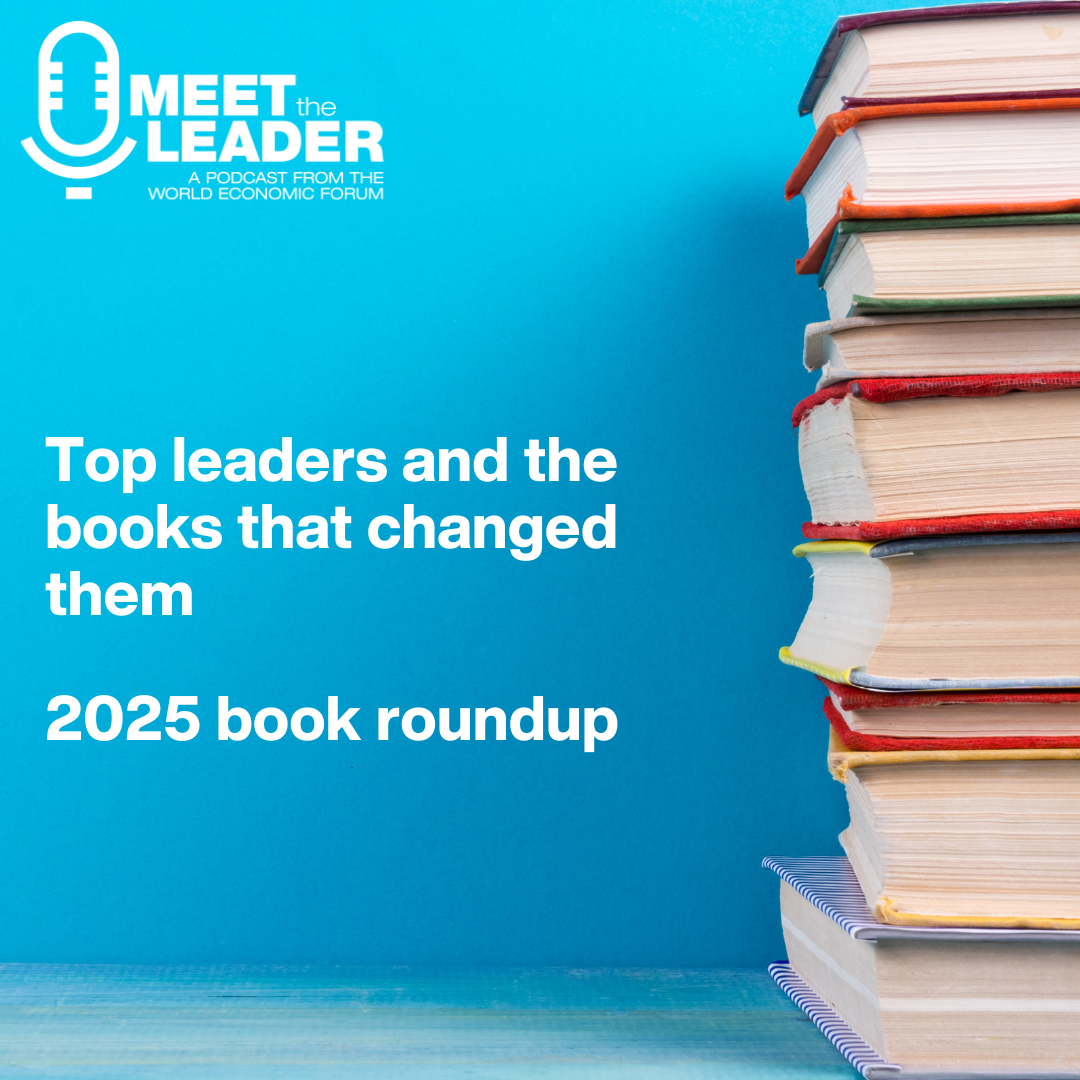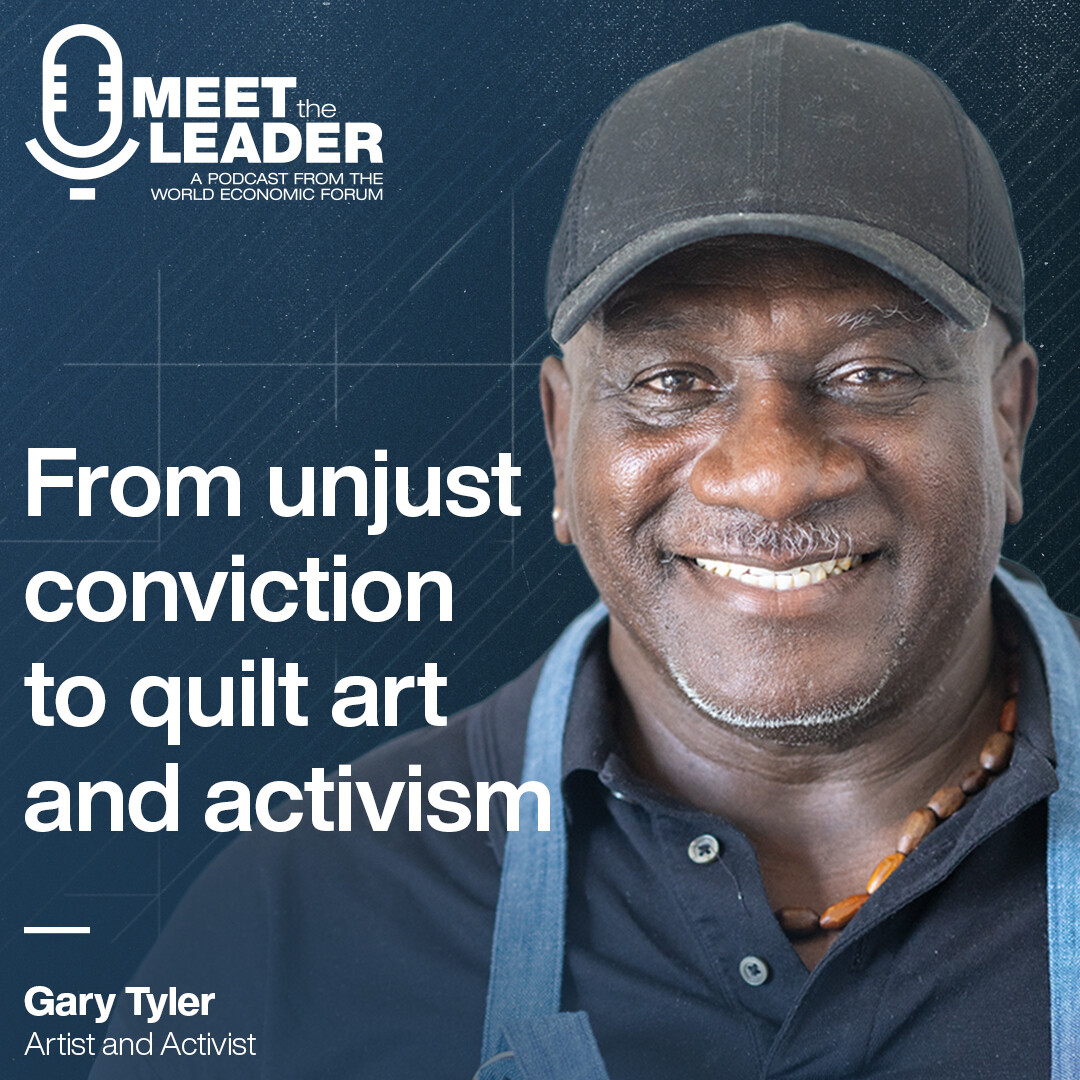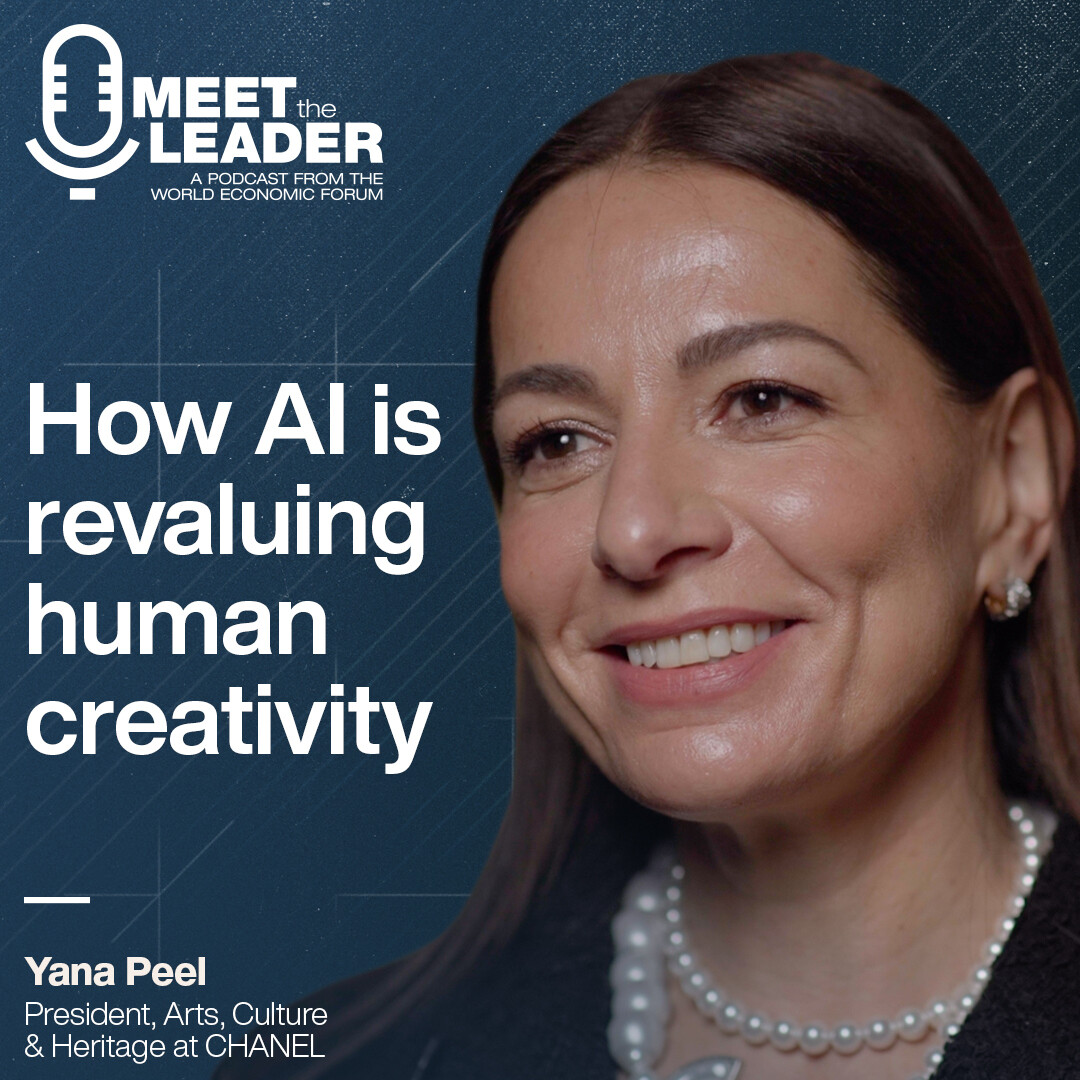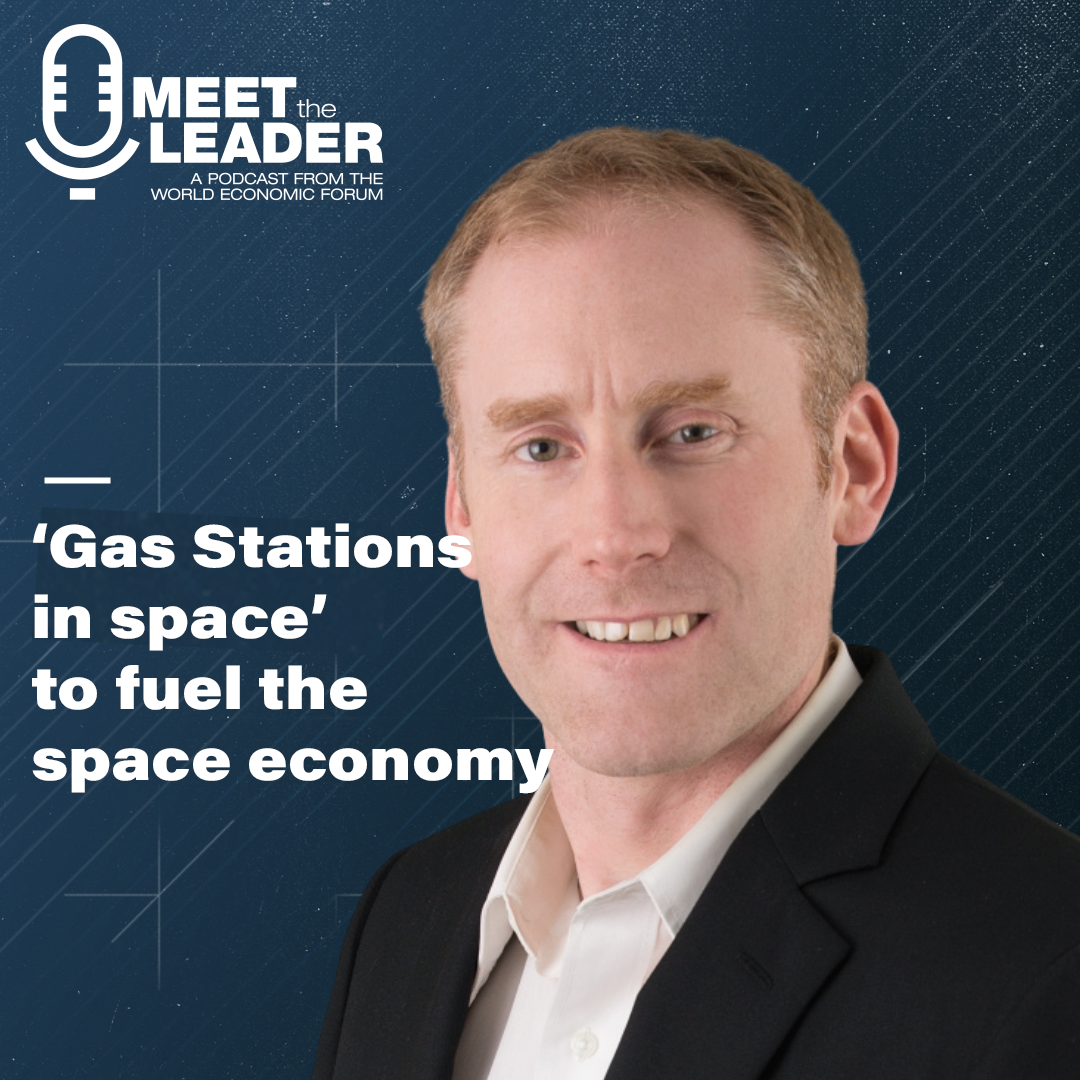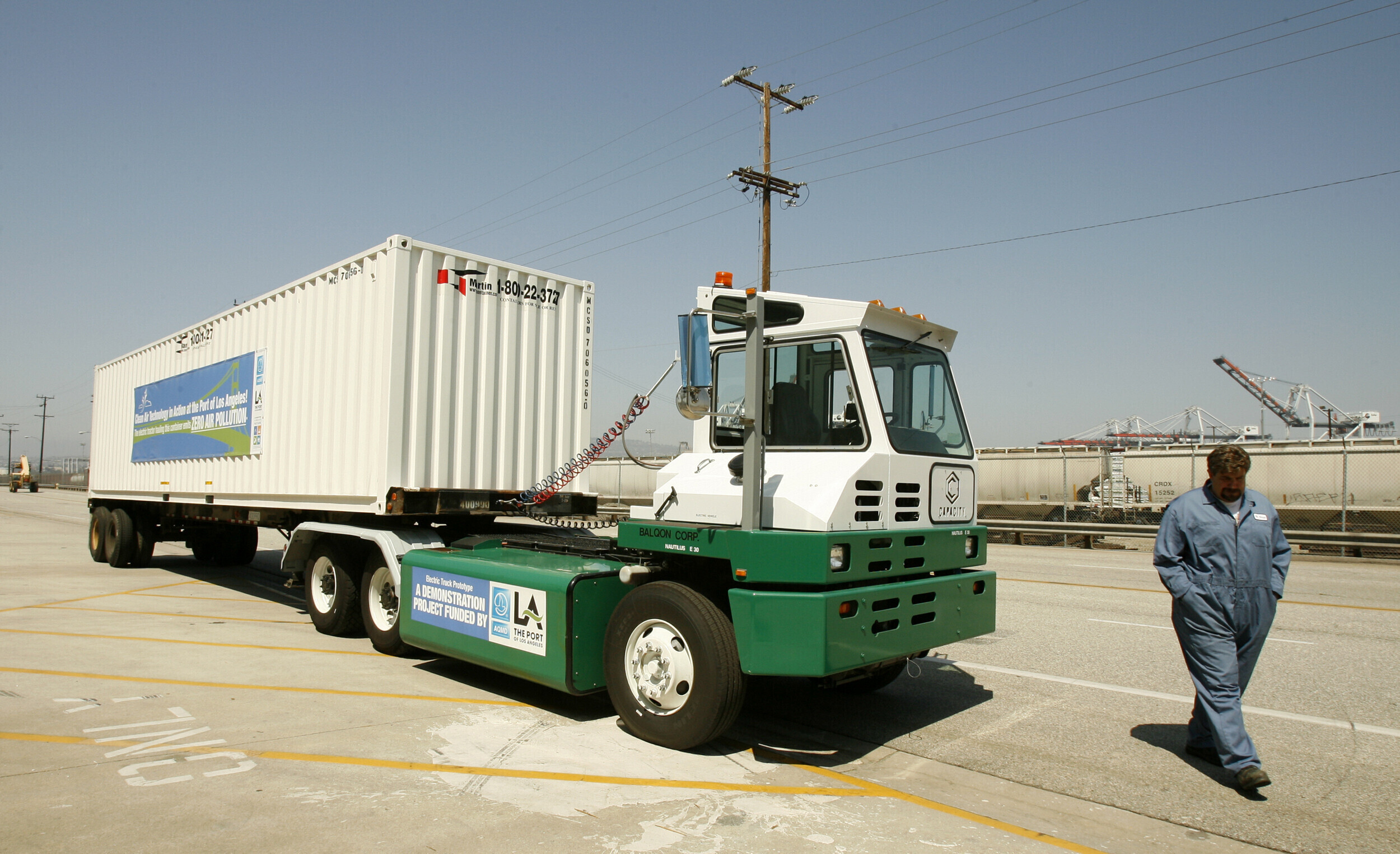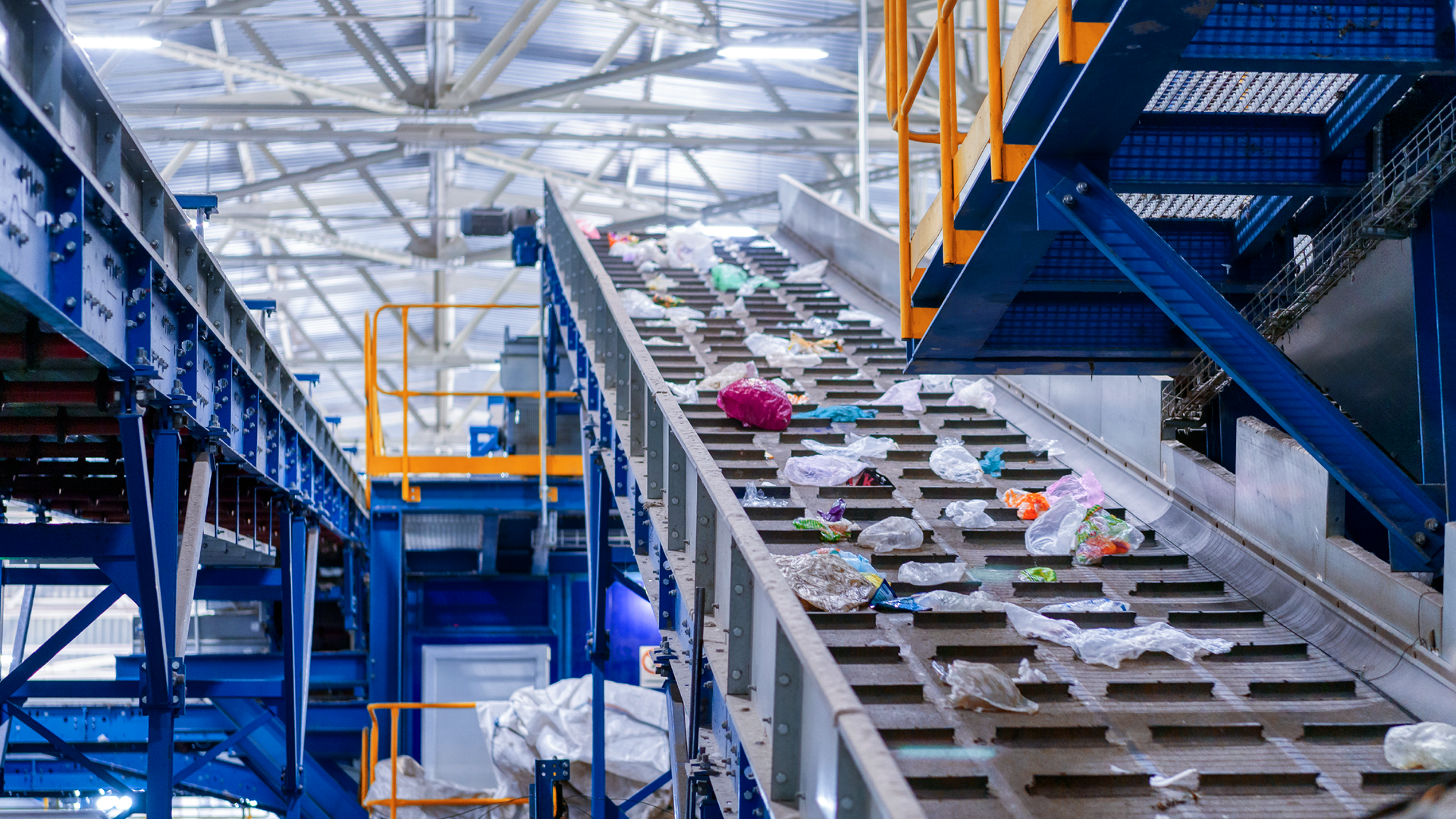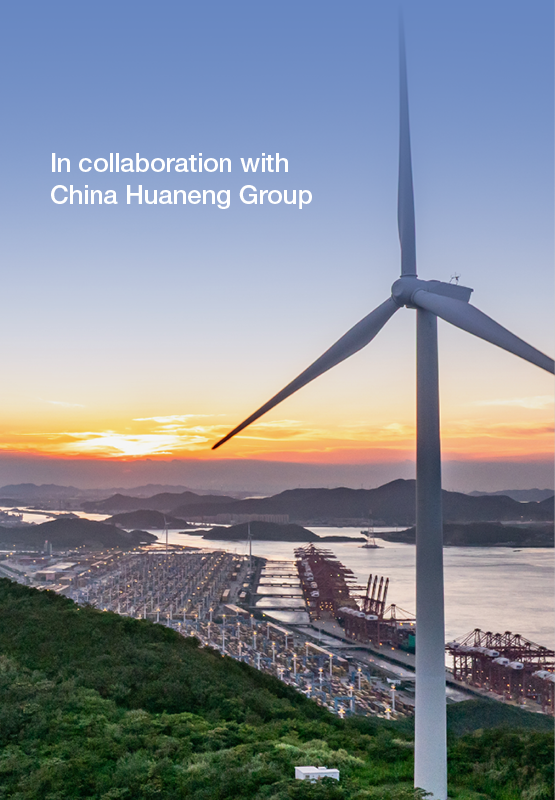Former Microsoft exec: Sustainability is ‘everybody’s job’. How key tactics can help
Sustainability goals take more than will - they take culture change and block and tackle approaches. Microsoft announced a host of big commitments in 2020 for the decade ahead, including a goal to be carbon negative and another to reduce emissions by 55%. Procurement played a key role in these goals and former supply chain exec Donna Warton shares the moves that have helped get leader buy-in, drive proactive thinking and help make sustainability a business imperative and not just a ‘one-off’ project. She’ll also explain the role an internal carbon tax has played in driving incentives, the challenge AI brings in staying on track for emissions goals, and what’s been effective to to force the right conversations in product design and at the supplier level to reduce waste and tackle emissions.
播客文字稿
Donna Warton, procurement expert: There's real financial reasons for leaning into green procurement and circularity.
Linda Lacina, Meet The Leader: Welcome to Meet the Leader, the podcast where top leaders share how they’re tackling the word’s biggest challenges. In today’s episode we share sustainability lessons from one sustainability leader -- and the block and tackle approaches to really embedding sustainable thinking into your every day operations.
Subscribe to Meet The Leader on Apple, Spotify and wherever you get your favorite podcasts. And don’t forget to rate and review us. I’m Linda Lacina from the World Economic Forum - and this is Meet the Leader.
Donna Warton, procurement expert: If sustainability is an afterthought, if it's not part of that gross margin conversation, it's always gonna be: well, we can never get to it.
Linda Lacina, Meet The Leader: Procurement isn’t a topic that gets all the buzz and attention. But it’s one that has been described to me as the private sector’s secret weapon for sustainability.
Procurement, after all, breaks down siloes and cuts across departments and functions. Procurement Leaders at large companies, especially, manage tens of thousands of suppliers, and have one of the best windows into how decisions are really made and how those decisions can have the biggest impact for the environment.
To be fair - the secret is likely out. For instance, one report found that nearly half of the companies it surveyed are now leveraging green procurement tactics, up from a third a few years ago. To better understand this momentum, we talked to hardware supply chain exec Donna Warton. Her CV includes roles at companies like Motorola and Dell and she was recently Microsoft’s Corporate Vice President of Supply Chain and Sustainability.
She’ll walk us through how procurement fit in to some of Microsoft’s biggest sustainability commitments -- like its goal to be carbon negative by 2030 and to reduce emissions by 55%. She'll share with us the steps they took to embed sustainability into day-to-day operations - lessons any organization and leader can put to good use. Crucially, she’ll share how leaders can balance big sustainability goals with even bigger business shifts - including the move to support AI.
Supply chains that can manoeuver through and around geopolitical risks, pandemics, tariffs and climate-related incidents, those are the companies that will be there for their customers when they need them the most.
”
She’ll talk to us about all that - but first, she’ll get us all on a level playing field. What is green procurement and why it’s important to understand.
Donna Warton, procurement expert: The way that I think about green procurement is really an approach. It's used to source goods and services in a way that minimizes environmental impact while also maximizing social and economic benefit. So, it requires us to think differently about the purchasing process – from just securing and sourcing new material, but also thinking about it through its entire product lifecycle. So, think of green procurement as an extension of scope of the traditional procurement roles, and that manages the entire lifecycle of a material or a final product.
Why is it important? Well, there's a lot of reasons why it's important, but I think there really are two that stand out for me. Both of them create competitive advantage by reducing risk and reducing cost, or addressing cost, for business long-term. And I put risk as the top reason, mainly because supply chains that can manoeuver through and around geopolitical risks, pandemics, tariffs and climate-related incidents, those are the companies that will be there for their customers when they need them the most.
Think of green procurement as an extension of scope of the traditional procurement roles, and that manages the entire lifecycle of a material or a final product
”And then, of course, managing costs, right? That's core to procurement and supply chain organizations. But green procurement is at the centre of that. Because resources are going to become more expensive. And the companies that can figure out how to reuse materials, and create and recycle materials, will create a competitive advantage. So green procurement at the heart of the work to find the waste, in order to reduce cost upstream and downstream from when your company uses or produces a product or service.
Linda Lacina, Meet The Leader: When it comes to green procurement. Let's talk about the state of it. How are we doing?
Donna Warton, procurement expert: Well, let me share some stats, because I think it's important just to understand where we are at. According to Procurement Tactics, five years ago, only 36% of companies had green procurement, while that number today is 51%. And 75% of countries have sustainable procurement policies.
So, I think it is fair to say that a majority of companies today do, and have leaned into, green procurement policies and have them. But honestly, I think we're at the very beginning, Linda, of actually seeing the implications and the impact from those policies. And so that's why I think this focus on, it's not just green procurement, but it's this transformation move to circularity, is really important.
And I'm not alone in this thinking. Gartner also predicts 60% of global enterprises will drive profitable growth through the circular supply chain practices. And McKinsey also did some research and they found that companies with strong ESG [environmental, social and governance] credentials save five to 10% in costs and grow exponentially by 10 to 20% more in value against their competitors. So, there's real financial reasons for leaning into green procurement and circularity.
Linda Lacina, Meet The Leader: And what might sort of hold back this progress, or even just slow it, for people who aren't maybe familiar with this?
Donna Warton, procurement expert: So the first is, if there isn't a business strategy or a company imperative, it's really hard for procurement organizations and supply chain organizations to lead this kind of transformation, because they are in service to the business. If your leadership isn't on board, there is a lot of education that has to happen to make green procurement and circularity part of your business strategy or your business imperative.
I think that's one of the big reasons why companies, maybe it's too daunting, or maybe they feel like there's other priorities. And so this is really an opportunity for procurement leaders and supply chain leaders to kind of step up to the plate from a leadership perspective.
Another reason is that these changes require procurement and supply chain leaders to break out of traditional roles, in order to lead and deliver outcomes. And that takes a culture shift. I mean, it's not easy. You have to empower your teams to look at the end-to-end life cycle costs versus just the purchase price. And that means you have to show up differently across the organization.
Linda Lacina, Meet The Leader: To evolve this, right? You've spoken a little bit about how we have to embed sustainability in the day-to-day, in the operations and how people work and how they think and how do. What does that look like? It's one thing to sort of talk about it, ‘oh, you know, we have to embed it in…’ What does it actually look like on a block and tackle level, can you give us a little bit of example from your work?
Donna Warton, procurement expert: Interestingly enough, I've recently contributed to the World Economic Forum Green Procurement Playbook, which is coming out. And this lays out the building blocks for embedding sustainability – from compliance to value creation. And so now companies can have a roadmap, so to speak, in order to lead their transformation.
But the journey I led at Microsoft, for me personally, began five years ago. And it started with a fresh look at sustainability. Like most initiatives, I found there were many projects, mostly around compliance-related, and they didn't have a return on investment. And although they were very good intentioned projects, these projects, many of them drained and frustrated folks working on them because they couldn't get leadership buy-in and they couldn't get anything really over the goal line.
So, I spent a lot of time working with people leading projects, understanding where they got frustrated, and then with leaders to make sure that they understood the value that these projects delivered. And a lot of that was getting everybody on the same page to define what success looked like.
Now, success for us was very quantitative. It was 55% reduction in carbon for all Microsoft hardware by 2030, But the catch was we had to self-fund it. So, once we had an aligned framework and a set of principles, we streamlined the projects, we created a return on investment, we aligned accountability across teams, and then we reported on that progress monthly as part of our business reviews. It wasn't a separate thing, it was part of overall business reviews. We went on to create a 10-year roadmap to achieve these goals. So we embedded expected results into our financial annual planning rhythm and we reviewed those on a monthly basis.
So that was kind of the tactics, but the bigger challenge for me personally was how do I change the culture? And the approach that I took was to set up a very small programme management office and empower each functional organization to come forward with their ideas. So, we focused on removing blockers and obstacles. Many of that was getting resources, making sure that these projects were supported by the functional leadership itself. And ultimately, it was making sustainability part of the business imperative, and that's what helped make it part of culture. So, it wasn't seen as a one-off, it was part of everybody's job. It wasn't part of a sustainability group job, it was a part of every body's job. And that was a pretty big shift for the organization and obviously it takes time but that's what we did at Microsoft and I found that to be very, very successful.
It wasn't seen as a one-off, it was part of everybody's job.
”Linda Lacina, Meet The Leader: That's great. You mentioned that sometimes there's blockers.. What might be surprising to people, as a blocker that might pop up? Because it might not even be something that is tied directly in an obvious way to procurement.
Donna Warton, procurement expert: Well, I think the biggest ingredient initially was just to recognize you have to be open to doing things differently. It doesn't really fit into standard operating procedure of the playbooks that we currently have in procurement and supply chain. And so, you have be a learner in this space. I spend a lot of time learning and being curious, asking questions and then thinking about how you can apply it to your business and your culture, and quite honestly, you won't probably have all the leaders bought in. I certainly didn't at the beginning. And so it takes a lot of time to educate. It takes some personal leadership. I invested more than 50% of my time in the first three years to bringing leaders on board to get them comfortable with the data, for them to understand the data quite frankly, because it's a new space for people.
You really do need pretty big goals in this space to create that differential thinking. But start with small wins and stay positive. And that's how you can change your culture
”I'd also say that a lot of people tend to over complicate this topic. You know, when I was first learning, I had to learn a lot of new lingo, but I also brought my own kind of business acumen and supply chain operational acumen, and said we have to simplify this because we're never going to we're never going to make progress if it's so complicated. And so simplifying things to bring people on board, I think, was another big learning early in the process.
And then I think the final thing is, it's okay to have big goals. Like, you really do need pretty big goals in this space to create that differential thinking. But start with small wins and stay positive. And that's how you can change your culture.
Linda Lacina, Meet The Leader: And you mentioned earlier that there was a lot of … some big and key commitments that Microsoft had made. 2020, you had mentioned before, but you want to be carbon negative by 2030 and reduce emissions by 55%. So, let's talk a little bit about that. What does that look like? What were the key changes, first of all, that needed to happen to kind of move forward with that? How did you guys get started?
Donna Warton, procurement expert: Yeah, I think it goes back to what I just said. I mean, the key changes were a new way of thinking. It's almost like a startup mentality because there was no path to follow. There was no roadmap. We had to create it. So it was really up to us.
And as I mentioned, most leaders, I would say all leaders of the organization, quite frankly, they didn't understand carbon emissions. They didn't how their business was impacted by it –from Scope 1 and Scope 2 to certainly Scope 3, which is absolutely the most complicated. So, we spent a lot of time on measurement and reporting to make sure that everybody understood the drivers of carbon emissions.
So, we had to spend a lot time on our products, on our supply chain, our operations. We started simply with the GHG [greenhouse gas emissions] spend, which the company used, but then eventually we moved to more sophisticated LCA [life cycle assessment] methodology for hardware. And in order to scale our data, our measurement and reporting, we needed to invest in a carbon data platform. I would say that was a huge step forward for us, in order scale and get more sophisticated in our reporting and tracking.
And when you can get something down from a part to a factory level, there's a lot of empowerment that happens. In fact, now over 70% of devices' emissions are measured down to the part and the factory of where that part was manufactured. So having those data-driven conversations to convince engineers that using this part versus that part is going to drive a cost reduction was transformational. It was hugely impactful.
The other major change was this quarterly meeting at a corporate level across the company, to collaborate and connect because we were all going through many of these same learnings at the same time, maybe to different scale or to a different extent. And so coming together as sustainability leaders and accountable for driving this within our product lines, our business lines, was really, really helpful for us.
And so our first chief sustainability officer started that and that – we call it the climate council – that climate council continues today. And we have a formal readout to the C-suite and our board. Sustainability goals are a part of not only the CEO’s bonus structure, but all of his direct reports. So, creating goals for your company, you need to have a way to measure and track and have accountability structure in place because that's how you can create an environment for collaboration as well. When you see one group succeed you go, ‘how did they do that?’ And then having this this forum where you're connecting on wins was really important for us.
You know, the other point I'll make is that there's a reason why these goals are said set out 10 or 20 years, because many of the solutions are not even in place yet. They're not there. So, part of this journey is about creating, like identifying the problem, but also working within your industry to create solutions for these problems. And that's, you know that's super empowering.
Linda Lacina, Meet The Leader: And was there something during this process that was surprising even to you? Or maybe you guys thought it would go another way and you needed to pivot, right? Naturally, that would happen. Oh, what surprised you about this process?
Donna Warton, procurement expert: What was really interesting about starting off was that unlike other supply chain processes that you begin, you know, you have formal structures, you have ISO [International Organization for Standardization] processes that you can follow. There was really, there was no standard measurement in place. There was a lot of creating your own way of measuring this, and tracking and reporting it, and the lack of standards was just such a surprise to me. And even talking to suppliers, they would be on a different standard and that would be a big frustration for them, because they would say, ,well, you have a different requirement of reporting than another customer, how do we figure this out because it's just, it's too much for us to actually report on these numbers every month? It's so much work.’
We'll come back to that data point, I think several times in our conversation, but that was very surprising to me. And with more regulations coming down the pipe, you would think that standardization would be high on the list, not only you know, for European governments, but education, universities, industries, so many have a vested interest. And so I'm looking forward to maybe a little bit more standardization in the carbon accounting side to make it easier for us to measure, support and for companies to be able to compare results, because quite frankly, you really can't. It's very difficult to do that today.
Linda Lacina, Meet The Leader: In 2020, Microsoft had another commitment. It made zero waste by 2030. And so, tell us a little bit about circularity. You had mentioned it earlier, but what makes this so hard? What makes circular supply chains so difficult to sort of get into place, and why are they so important?
Donna Warton, procurement expert: Yeah, you know, initially we were approaching zero waste with a typical manufacturing approach and we made great progress. But we also realized that it wouldn't be good enough, unless we address the waste at the end of our product's life cycle. E-waste is one of the fastest growing waste categories and so we knew we had a pretty big challenge there.
And so that's how we define zero waste and honestly that's how really this effort and focus on circularity, this whole mindset of bringing this circularity into product design as well as product usage to avoid waste and use resources responsibly, became a big thread for us.
One of the initial approaches of circularity was repairability. And, interestingly enough, repairability started out as compliance to meet French regulations. And as we realized that making our products repairable not only saved money, but it also addressed our customer needs. And it created a new revenue stream. But we had to invest, not only in creating a product roadmap that incorporated repairability, but also we had to stand up a whole repair network across the supply chain.
So, there was a lot of effort involved and a lot of planning holistically across functions in order to make that a reality, and Microsoft is still rolling that plan out. But I'm really happy to say that our products are the most repairable in the PC industry and I think that's something to be proud of. Our products last longer, our customers are a lot happier, and we've created a new profitable revenue stream.
Linda Lacina, Meet The Leader: Not everything can be planned for, of course, in any sector for any goal. And there's an interesting thing that has happened, right? So, Microsoft's emissions increased 23% between 2020 and 2025, thanks to AI expansion, the need to sort of power this thing that no-one's quite sure where it's going and how do we can maximize it. Can you talk a little bit about how people can plan for the future with flexibility? What should they be keeping in mind, so that they can keep their eyes on the prize in the long-term, while still meeting changes that arise in the near-term?
Donna Warton, procurement expert: I'm so glad you asked this question, because again, sustainability goals are set 10, 20 years out. It means you have a set of assumptions that you're working with. And in technology, those assumptions change pretty rapidly, which we're, of course, seeing through AI. And the key is we have to adapt, and we have to respond, and that's exactly what happened at Microsoft.
And that climate council that I talked about earlier is where we came together and saw that we had a much bigger gap. We had to reprioritize what came to the top, what problems we had to go solve. Of course, energy was one of those. As well as not only understanding what was driving the gap, but making sure that we reprioritized the resources needed to address those gaps as well. So, I think having an honest assessment pretty regularly, we actually got to a quarterly cadence, but we started off with an annual cadence of that, I think is really important.
And I will tell you that this is why you see a lot of industry partnerships that are coming out for sustainability, because no company alone can solve some of these bigger issues. And not only do they need to be addressed by the ecosystem, but there has to be a partnership with country-level government leadership on policy setting. This is what's happening today as a result from the increased need from the energy grid. And many governments and industries are partnering to add renewable energy sources. So, I think we're just getting started there, but I would expect to see more policies helping companies invest in renewable energy.
Linda Lacina, Meet The Leader: And if I'm a sustainability leader, is there a question I should be asking myself to make sure that I am not losing sight of the prize? How can I make sure that I’m focused and I don’t get distracted?
Donna Warton, procurement expert: Well, again, I think it comes back to having an honest assessment of where you're at and do you have the right set of priorities to address the gap.
Some of these priorities are having pretty honest conversations with, you know, let's say your supply chain leaders to say, if this supplier in this country is not giving us a path to renewable energy, we need to do something different. We need to go somewhere else and partner with a supplier in a country who does share the same vision. And I think that's really important.
I mean you actually see countries like Costa Rica who are now 99% renewable energy because of their country, their government's policies, and now they're attracting industries. And so I think businesses that have sustainability as part of their business imperative help use that to direct their manufacturing and supply chain footprint. But those are pretty big decisions. And so I think being clear in what success looks like, kind of going back to the framework and principles that you're using as a business, are really important to help guide you in those big decision-making events.
Linda Lacina, Meet The Leader: Our procurement team, they have a playbook that they've been working on. You mentioned this earlier. And it is for those who are not familiar with this, it is helping to collect all kinds of different case studies from different procurement leaders, top procurement leaders, it's a special playbook. And one of the things that is highlighted there is that we are moving from compliance-driven to partnership-based supplier engagement. These are a lot of words a lot people are not familiar with, what do they mean? What is the difference, for people who aren't familiar, and why is it critical to understand?
Donna Warton, procurement expert: Yeah, I think simply put, compliance driven is reactive. You're waiting for a regulation or a law to come into effect and you're reacting to that. Partnership driven is proactive, it's strategic, you're working with your suppliers and regulators and hopefully influencing regulation if possible. And I think that shift, that mindset shift, is incredibly important to feel that you have a path in this, you have say in this, versus it happening to you. So, moving up the value chain there, I think is really important for supply chain and procurement organizations.
At Microsoft, moving to a more proactive approach, we added Scope 3 carbon reduction targets as well as required all manufacturing facilities to move to renewable energy, to do business with us. Each supplier was required to submit plans to achieve those targets annually. And then we also used a third party to validate any claims against those. So, that's a good example of how we move to a partnership-driven approach.
Linda Lacina, Meet The Leader: With some of these changes, we're talking about these big sustainability expectations. It can be really, really difficult for very small suppliers to have the data, or the resources, or what they need to meet those goals, meet those expectations. What did you guys learn about what's needed to make sure that they can be successful? What needs to be in place?
Donna Warton, procurement expert: Well, when we first came out with the new requirements, we spent a lot of time with suppliers, so they understood why we were adding these new requirements along with how it fit into the bigger set of requirements that we ask from our suppliers.
And you know, it's funny because initially we were pleasantly surprised. We had so many suppliers say, ‘well we have this and we have that, and we this factory that is on renewable energy’ and we weren't even capturing that in our data. And so, boy, I would say the first year and a half we were learning a lot from our suppliers just to where they were at on this journey, and some were farther along than we thought than others and some where further behind.
I would say once we got a good baseline, we really dialled in and segmented our suppliers from a more advanced ‘where people were at’ versus, and as you said, I think a lot of smaller suppliers needed a lot a help. If I was giving advice today to procurement organizations, I would definitely encourage you to try to get a good baseline and understand where your suppliers are at and where they need your help. And then segment your suppliers with more strategic suppliers, where you can focus more on a roadmap and where you're going. And then some of the other suppliers – and some might be big, maybe they're not all small – that actually need more help with data and reporting and measurement. And you may have to spend more time leaning in on that with them to get a good baseline from them. Because I don't think you can actually create a solid green procurement plan, without having an understanding of a good baseline and a measurement that you know is valid.
Linda Lacina, Meet The Leader: Microsoft has an internal carbon pricing. It is one of the most mature of its kind, even around the world. But tell us a little bit what that is, what that is and how is it they help drive sustainability?
Donna Warton, procurement expert: Yeah, it's really an interesting way to approach incentivizing businesses to care, within your own company, to care about carbon emissions. So at Microsoft, the internal carbon tax was kicked off in 2012 for Scope 1 and Scope 2. It was like business travel and you would get a tax on your operating income, your budgets, but it was managed very high level, so most people in the company didn't pay attention to it. In 2020, a Scope 3 carbon tax was added and that scope hits each product's P&L [profit and loss] and it shows up in your gross margin. And so now, all of a sudden, business leaders and product leaders said, ‘okay, we need to understand this’.
The tax really has two purposes. The first is, as I said, to incentivize the product groups to use this carbon tax to create a return on investment to fund projects, to self-fund their projects. And at the corporate level, they're using this tax in order to buy carbon offsets, as well as to invest in sustainability investments that bubble up through that climate council in order to get, you know, the biggest return on investment at the company level.
So, there's a really good empowerment structure from the internal carbon tax. And personally, as a sustainability leader within the business, once you figure out that return on investment, it's very helpful in convincing business leaders to invest in sustainability projects, because some of them have a better return than other projects that – the business leader had only had so many resources – and so being able to kind of be on a level playing field with those other projects is super helpful.
Linda Lacina, Meet The Leader: And with the internal carbon tax, is there a sense of a before and after? Like I know it was all the way back in 2012 when it was put in, but is there, does Microsoft have a way of sort of contextualizing the change that it helped bring about, for what it was able to contribute to reducing emissions and the like?
Donna Warton, procurement expert: Oh, yeah, and we incorporate that into our financial reporting process, so it's very quantifiable. We review it in our monthly business reviews. And so when we can show – and by the way, we update our financial outlook every quarter – so when we can show, you know, versus the prior forecast, our carbon tax is down £1 million, £5 million because of these projects, it becomes very real.
And there's a lot of celebrations that happen as a result of that, which again fuels the desire to say, ‘hey, I wanna bring that sustainability project and I wanna get the return on investment so I can bring that back to my leadership.’ And so once you kind of start that flywheel, you've got a lot of functional folks – whether it's engineering, procurement, supply chain, quality, I mean, just across the organization, compliance teams, reverse supply chain repairability – coming to get their projects funded through the carbon tax or a big part of it through the carbon tax incentive. So it's a gamechanger from, again, aligning sustainability to be on the level playing field with other projects you may have or priorities you may in your business.
Linda Lacina, Meet The Leader: If I'm a leader and I'm listening to this and I am just trying to maybe link sustainability to some other sort of performance or some sort of behaviour within the business, what would you suggest, especially if it was something like the gross margin or the compensation? What should leaders be thinking about? How should they be factoring this in? What should they be doing to incorporate that link?
Donna Warton, procurement expert: Well, I think it's going to be different for every business. But what I can say for us is, if you want your product design teams to care about sustainability and carbon emissions and waste, it has to be part of the gross margin conversation. Because, ultimately, our job is to provide products and services that customers want at the right cost so businesses can make money.
If you want your product design teams to care about sustainability and carbon emissions and waste, it has to be part of the gross margin conversation
”If sustainability is an afterthought, if it's not part of that gross margin conversation, it's always gonna be: well, we can never get to it. So having it part of the products’ P&L, I think was transformational in Microsoft's ability to level the playing field. And force the right conversations, which, is by the way, at the product design and at the supplier level in order to get the right outcomes – not only for carbon and waste, but also on cost.
Linda Lacina, Meet The Leader: Why don't you tell us a little bit about what kind of brought you to your career? Not everyone, not every little girl, dreams that she's going to be a procurement leader, right? What are are two roles that were really shaping to you and helped kind of led you either to the sector, or even into sustainability as a whole?
Donna Warton, procurement expert: Well, it's an interesting story how I came to lead sustainability. But I would say that both my financial and supply chain background, because I'm an operational thinker, and systematic thinker, led me, based on a conference that I was at and hearing from another speaker, led me to question the approach that we had within Windows and devices, on our approach to sustainability and in particular circularity as well.
This was about six months before we had our first chief sustainability officer named at the Microsoft level. So we didn't even have a leader in sustainability at this time. But I knew that there was something missing in the way that we were approaching sustainability, which was from a compliance perspective.
And so I came back from that conference, and I think because of my financial background, my operations background, looking at it as a business opportunity – something that customers care about, something that could help us drive costs out, understanding the internal carbon tax better and how we could manage that tax, all those things started to come together.
And I would really encourage supply chain leaders and procurement leaders, manufacturing leaders… like, this is your opportunity to expand your impact to the organization. Because, hopefully, as you've heard through this podcast, there is a lot of opportunity to not only delight customers and possibly bring new revenue streams, profitable revenue streams to your business, but it expands your ability to think through problems much more holistically and not just with blinders on kind of what happens after you buy a set of material or manufacture material.
And so I think maybe just being operational-minded, Linda, was what led me down this path, and it's been, I would say, certainly a joy of my career to do that.
Linda Lacina, Meet The Leader: Is there a book you recommend?
Donna Warton, procurement expert: One that might be interesting for people is Waste to Wealth: The Circular Economy Advantage by Peter Lacy and Jakob Rutqvist. That might help people understand and ground you through examples, and get you in the mindset that is needed to lead a change within your own company. And then I think if you're looking for shorter reads, the Journal of Circular Economy is a good source of articles on specific topics. Of course, World Economic Forum white papers for frameworks and approaches is another good one as well.
Linda Lacina, Meet The Leader: We are coming into COP30, right? It's going to happen this November. But you know, it's a great opportunity to take stock of what's needed, what people should be prioritizing. As we kind of look into the fall, what is your message for leaders ahead of COP30?
Donna Warton, procurement expert: I'd say be the leader that drives impact and outcomes for your business, your customers, using circularity and sustainable business practices. Show others what can be done, that circularity and sustainability are ‘ands’ not ‘ors’. But be the leader, the person to steps up to the plate. That may be a little personal, risky in your career but I would tell you that anything hard is worth doing and the last five years at Microsoft in the success that we're seeing from a lot of that hard work is going to pay off for years to come. So be that leader for your business, your non-profit, your organization.
Linda Lacina, Meet The Leader: That was Donna Warton.
Thanks so much to her. And thanks so much to you, for listening.
To read our recent Unlocking Green Procurement Leadership Playbook, go to the show notes of this episode - we’ll make sure to have a link.
And to listen to more podcasts, including my colleague’s podcast Radio Davos, go to wef.ch/podcasts.
This episode of meet the leader was produced and presented by me with Jere Johannsson and Taz Kelleher as editor, and Gareth Nolan driving studio production. That's it for now. I'm Linda Lacina from the World Economic Forum. Have a great day.
话题:
气候行动分享:
更多集:
更多关于 气候行动查看全部
Wee Kean Fong and Yvonne Zhou
2025年12月6日

